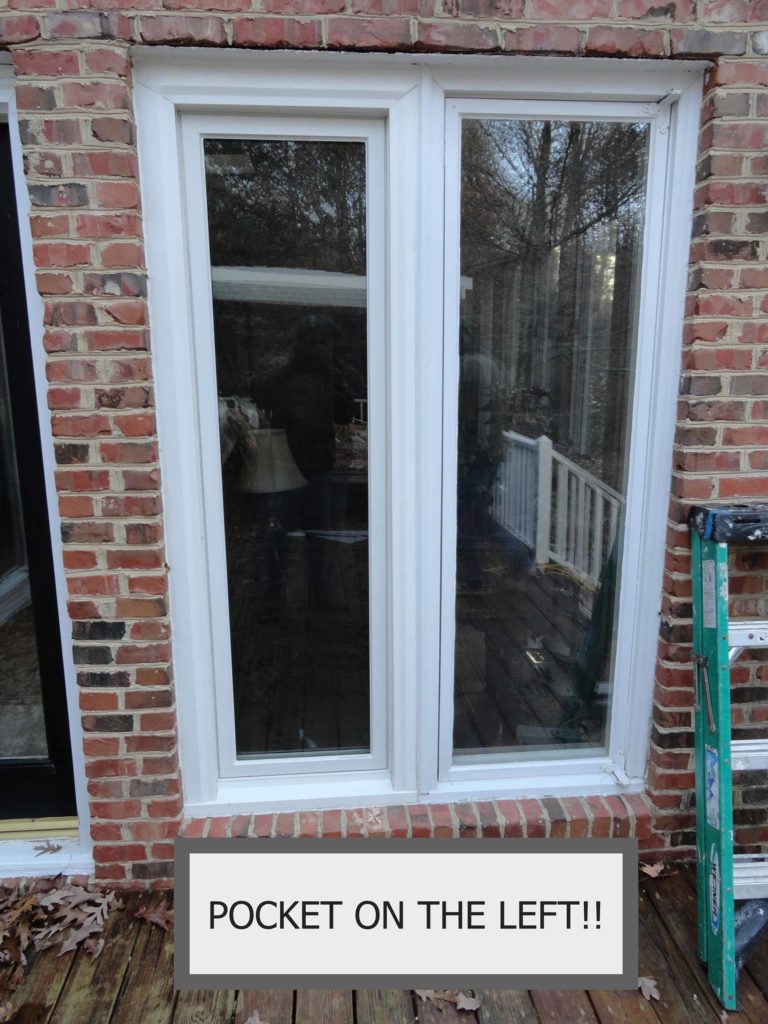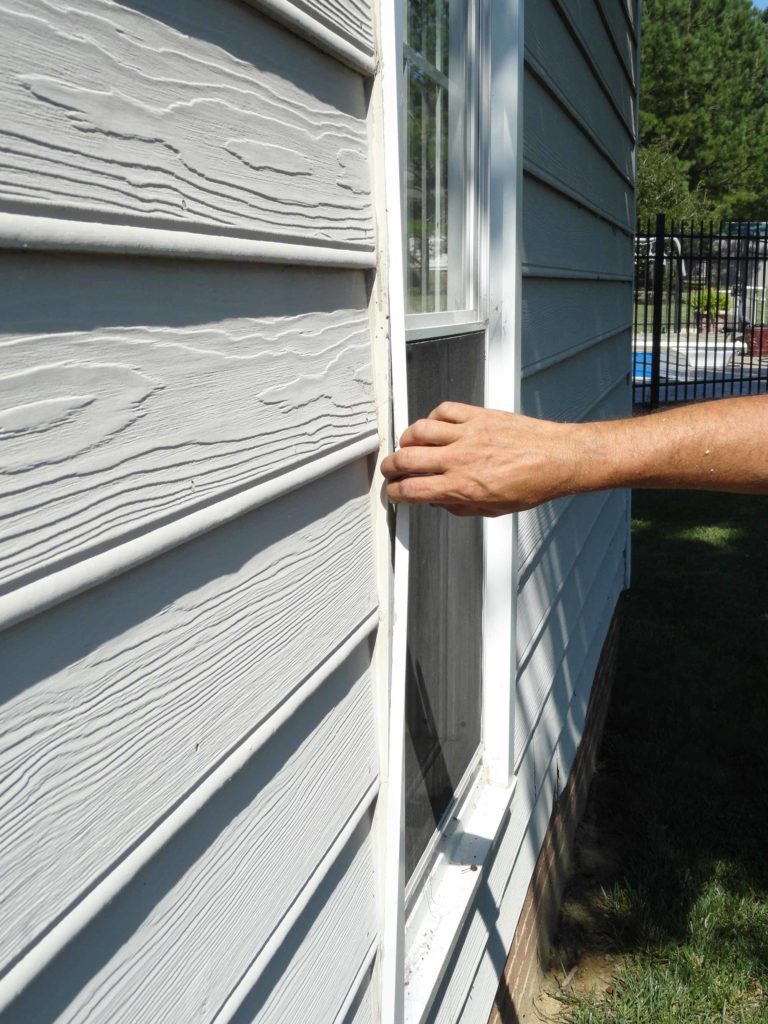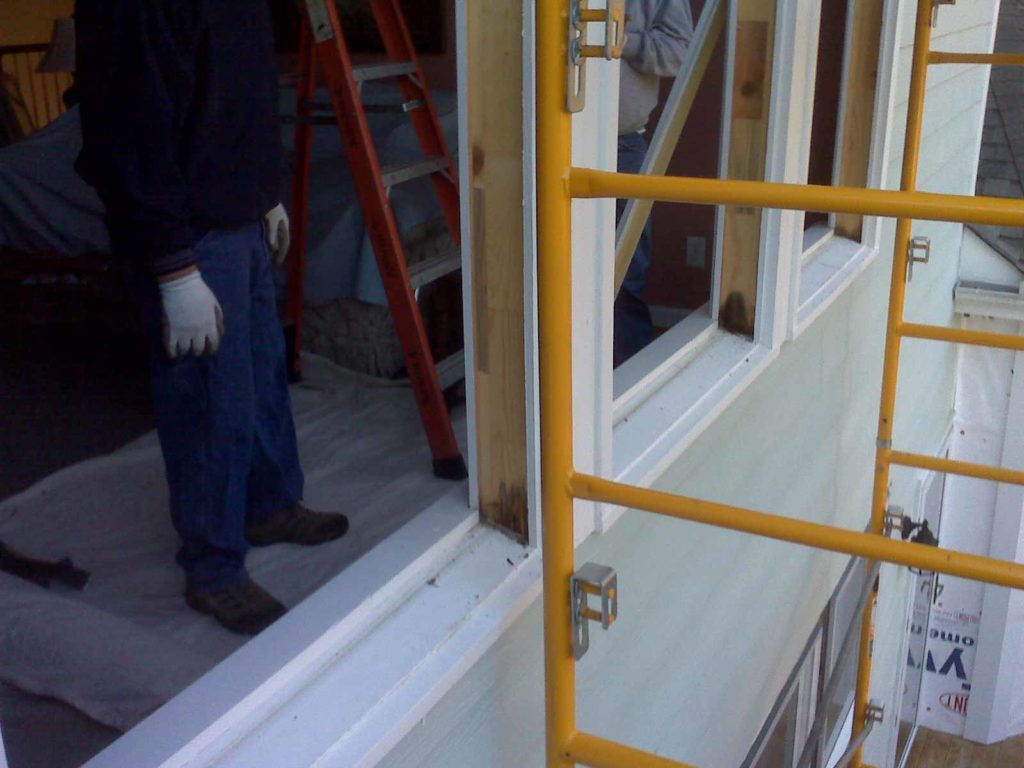Shopping for Replacement Windows in North Carolina
When replacing wood double hung or casement windows, you have 2 main options to consider:
- Pocket Replacement Windows – remove only the sashes and the jamb liners of double hung windows. For casement type windows only the sash and hardware are removed leaving the frame and trim intact.
- Full Frame Replacement – involves removing all parts of the old window including trim and sills.
In the history of replacement windows in NC, 30+ years ago, vinyl window manufactures discovered that you could remove the sashes of the very old wood windows and insert a window into that existing space called the pocket. These windows were typically used in homes built before 1950. It seemed like a very good way to save not having to remove all of the frames and trim. Many of these homes of this era had plaster walls and lead paint. Removing the frame and trim was a large undertaking; it was just a whole lot easier to pop in a pocket window providing there was no water damage to existing frames and trim. Today there are many companies with all types of windows competing for the pocket replacement business.

Pocket on the Left
In the past 50 years wood windows have been built and installed differently than windows installed before 1950. They typically used a brick-mold exterior trim not a flat stock type and in time the window weights were no longer needed .
These windows may or may not have lead paint to preserve the wood. After 1978 lead paint was banned for obvious reasons. Many of the homes in North Carolina from the 80’s through the early 2000’s used builder’s grade wood windows. Because they were low cost windows and looked good at first, many builders in the Triangle Area used them exclusively in the homes they built, and many of them went with M&W windows. There were others, pretty much the same low quality. Many pocket replacement companies in the triangle area figured out that they could use the same pocket windows they used on the old homes.
These are the issues with using these pocket replacement windows on homes built from the 70’s through the 2000’s:
- Many windows in this era are narrow to start with and adding a whole window frame into the existing frame reduces glass size and grill proportions.
- You leave rotten and moldy wood in place.
- Covering existing wood trim/frames with capping or wrapping only intensifies mold issues. (See Replacing Windows in Chapel Hill article for pictures and more info on this issue)
- You are unable to provide a drip cap behind the siding,
- Many windows in this time period do not have insulation between the wall studs and window frames.
- Many builders used fiberglass insulation around windows in later homes. Fiberglass is ineffective as a window insulator. Check Dept. of Energy website for more info.
- If your windows have settled and are out of square, inserting a window into that space will not fix the problem.
- You cannot determine if there is water damage to the wall structure.
- The frames, sills and trim will eventually rot, leaving more work to deal with later.
- The appearance of your home will be changed, look at the neighbors who have done pocket replacements; the original architecture has changed.
- The pocket window installations starts to look weathered after a few years, power washing capping or wrapping is out of the question, PVC coated aluminum trim coil typically used for wrapping/capping attacks dirt, then algae and mold will form soon after.
- The pocket window installation totally relies on caulk for sealing, no flashing or siding penetration included.
This is a 10-year window at best, so why spend a lot of money for a temporary incomplete installation? Many pocket replacement companies charge as much as full frame and they push for the window quality not the installation.
Full Frame does not have any of these issues, sometimes it costs a bit more more and painting of trim is involved but 5 years from now you’ll be glad you went with the full frame method, knowing you will not need to address window issues again.

Window wrapping or capping exposed, does not penetrate siding

Pocket replacement frame inside existing window frame

Hidden mold and rot on 12 year old m&w wood window frame, sills and trim look fine!!